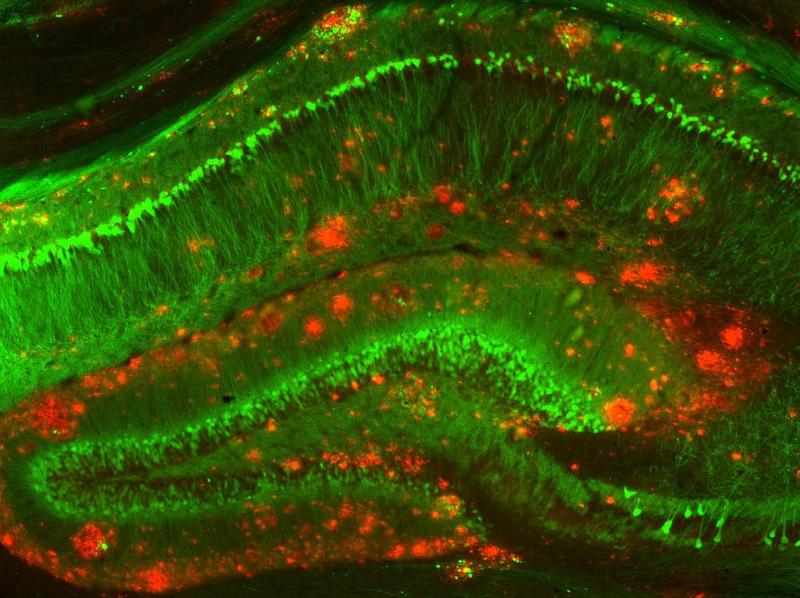
January’s research from the Duke Department of Neurology ranged from the global--an analysis of neuro-oncology training and research in Africa’s most populous country--to the subcellular level, with an examination of the function of sodium ion channels at the subcellular level. Other highlights include uncovering the mitochondrial origins of a rare form of blindness, the biggest trial of ALS patients in history, and the use of “spackle tracking” to help us understand the effects of traumatic brain injury. Read more about these stories and more below.
(The partial government shutdown earlier this month may have prevented some recent studies from appearing on PubMed. Any articles left out for that reason will appear in our next entry at the end of February).
Neuro-Oncology
- Nigeria, the most populous country in Africa, only has one neurosurgeon for every 2.4 million people living there. Few within that small group have advanced training in neuro-oncology. A team including Katy Peters, MD, PhD, performed a literature review of neuro-oncology research coming out of Nigeria to obtain more information on this subject. They found that while huge gaps in training exist, research output is improving and there is promise for improvement. Read the full story in World Neurosurgery here.
Neurocritical Care
- “Speckle tracking” is an emerging technology that provides imaging of strain within the heart. A team including Daniel Laskowitz, MD, MHS, used speckle tracking to examine damage to the heart’s left ventricle associated with traumatic brain injury. Their case-control study found significant, persistent dysfunction in patients with moderate to severe TBI. Read that study here.
Neurodegeneration
- Spinocerebellar ataxia type 7 (SCA7) is a rare neurodegenerative disorder caused by repetitions of the CAG-polyglutamine in the ataxin-7 gene. Using mouse models as well as human stem cells, senior author Al La Spada, MD, PhD, Colleen Stoyas, PhD, Pawel Switonski, PhD, Chenchen Niu, PhD, Weiwei Fan, PhD, and colleagues identified the origins of this condition--mitochondrial dysfunction resulting from decreased production of the NAD+ enzymes. Read the full story here.
- The use of human-induced pluripotent stem cells (hiPSC) have greatly advanced the study of neurodegenerative diseases, these cells represent rejuvenated neurons, rather than the aged cells associated with those diseases. Ornit Chiba-Falek, PhD, Lidia Tagliafierro, PhD, and Madison Zamora developed a new method which induces age in these cells, helping to further future research and suggesting a role of the SNCA gene in human aging. Read that study here.
Stroke
- Hospital transfers reduce health outcomes for patients with acute ischemic stroke by delaying care, according to new research by first author Shreyansh Shah, MD, Ying Xian, MD, PhD, and colleagues. Their Circulation article examined data from nearly 2 million ischemic stroke patients, comparing individuals who received endovascular therapy when they arrived to those who received it after a transfer. They found that interhospital transfers for EVT was both increasingly common and associated with poorer outcomes such reduced home discharges or independent ambulation. Read that study here.
Neuromuscular Disorders
- Several years ago, the alternative therapy lunasin was associated with a striking case of an ALS reversal, where a patient with the disease showed extended improvement over time. Rick Bedlack, MD, PhD, and colleagues designed an innovative, expansive trial to test if these results could be replicated with a larger group of patients. The year-long study had the highest trial enrollment rate for ALS patients of any study to date and provided empirical evidence that lunasin does not appear to be associated with ALS reversals. Read that study here.
Neurobiology
- The TRPV ion channel in cells has been studied for its role in detecting the signals that the body later determines as pain or itching. New research by Wolfgang Liedtke, MD, PhD, and colleagues examines another role for TRPV--determining the ultimate fate of stem cells. stem cell fate determination. Further study of this role could lead to vast improvements in treatments focusing on tissue regeneration. Read the study in PNAS here.